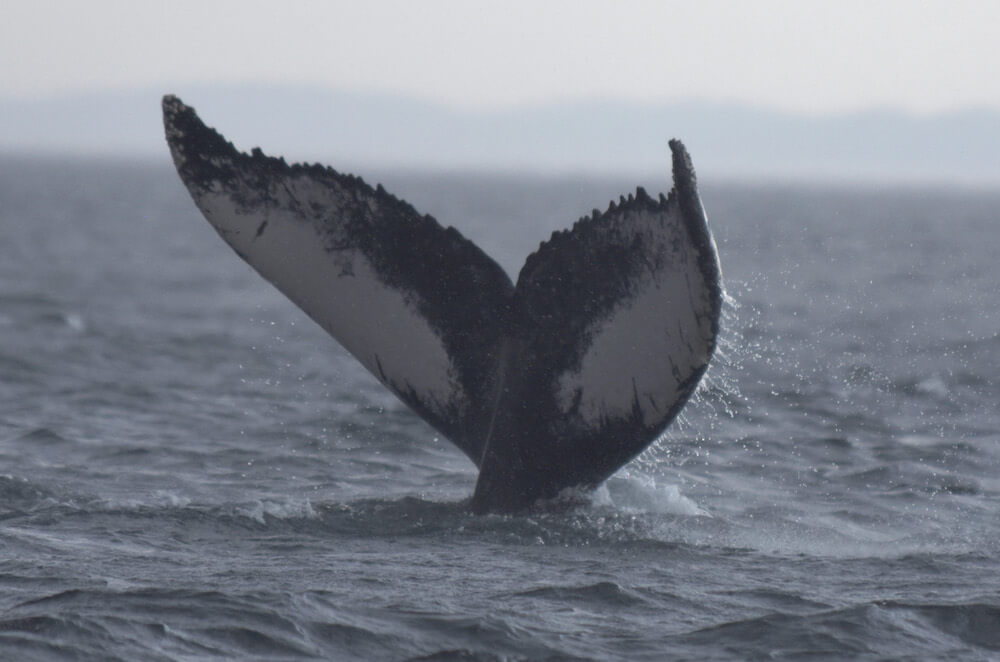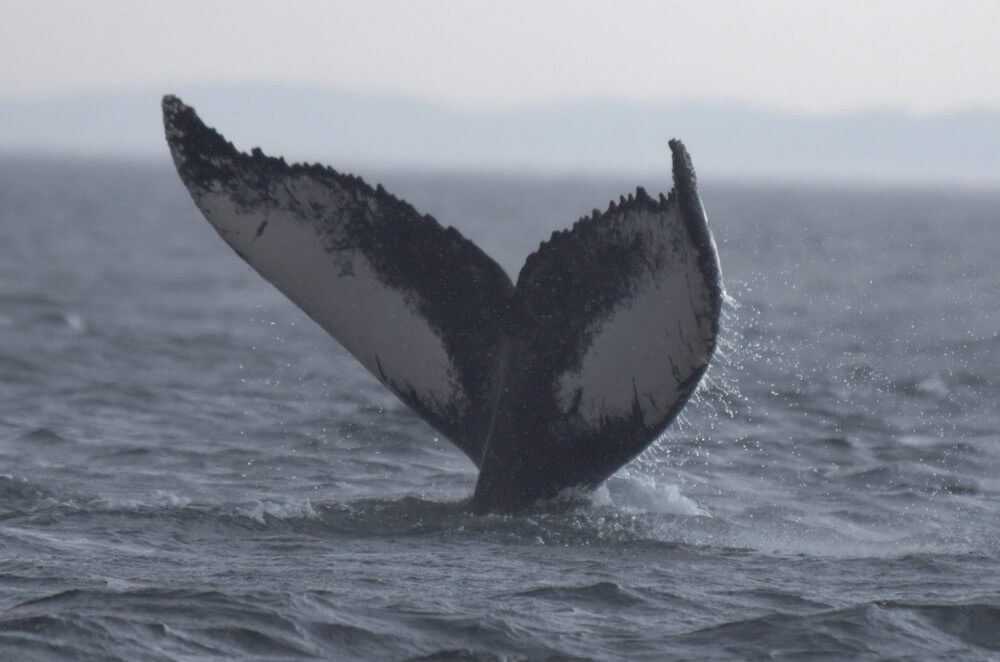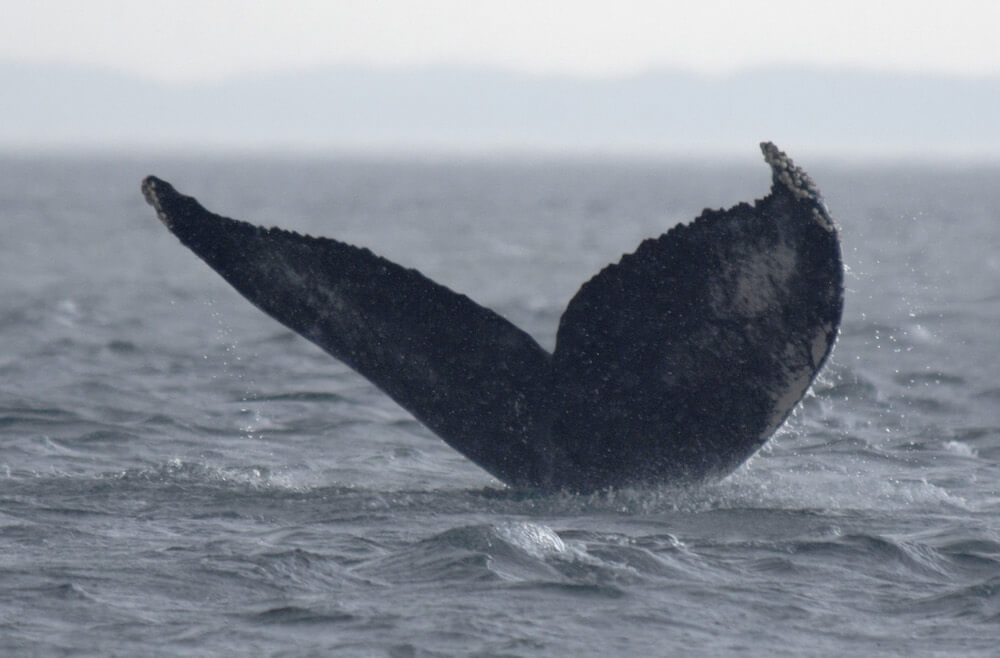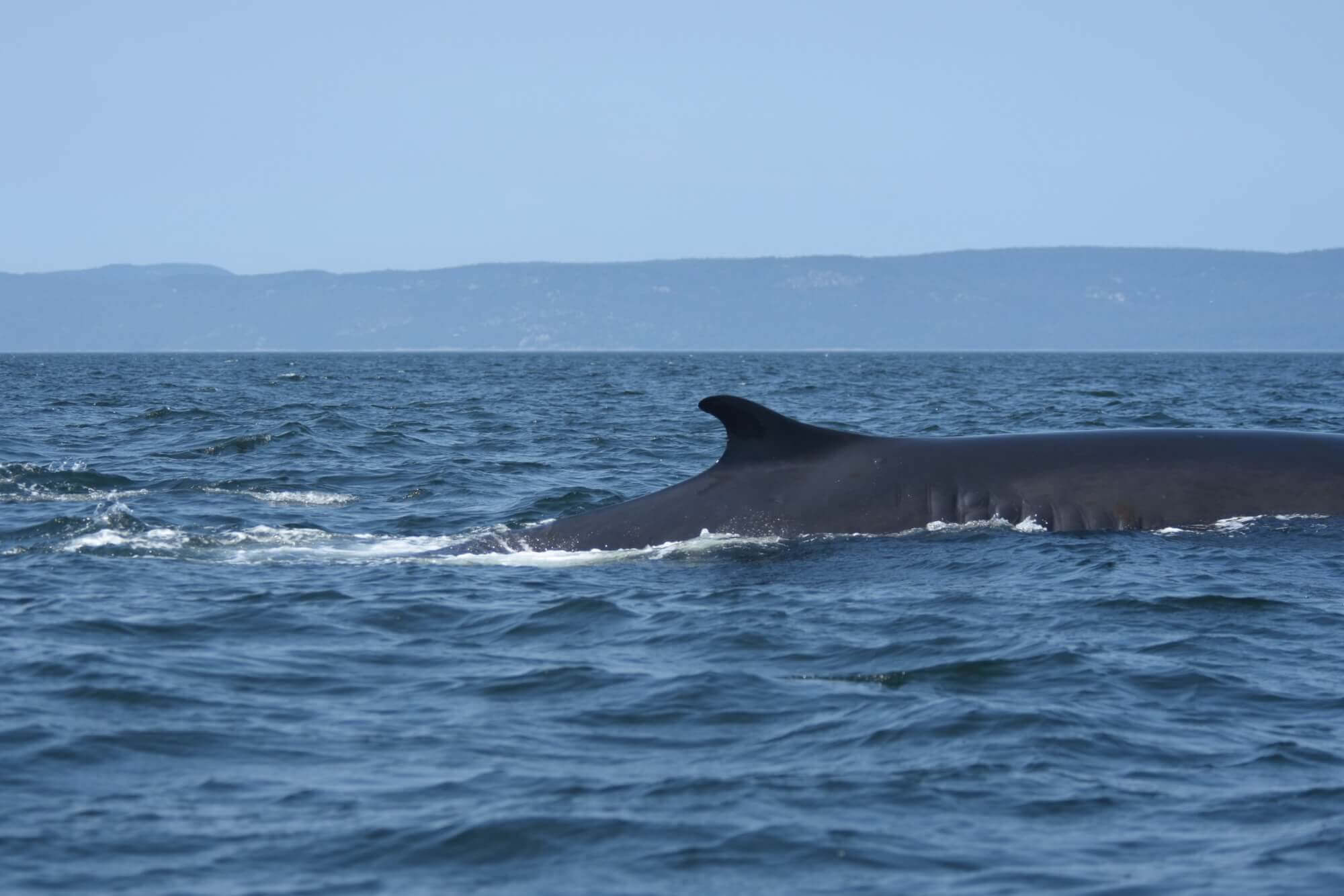My name is Stéphanie, and I’m one of GREMM’s (Group for Research and Education on Marine Mammals) research assistants for the summer of 2021. After completing my studies in biological survey and research techniques in 1999, I had the privilege of being selected to photograph large rorquals. This was the start of a great passion for whales and photography, and I’m back at it again this year!
Today I am bringing you with me for a day of working with whales. It’s July 23, 2021. After gearing up (camera, GPS, voice recorder, warm clothes), I decide to set out on a Zodiac cruise at 4:30 in the afternoon. The water is calm and the sun is shining… Surely this will be a great outing!
Near Cap de Granite between Tadoussac and Grandes-Bergeronnes, we have our first encounter with two humpbacks. A little farther along, we spot two more individuals and another one beyond these. There are also a handful of seals as well as a few minke and fin whales in the distance that we are able to spot thanks to their large spouts. We’re off to a fantastic start!
We wait for the humpbacks to return after they dive to forage. And then they resurface… One blast, two, three, four, five! Wow! The five whales have regrouped! I’ve never seen that before; how awesome! And hearing their powerful blows is absolutely unreal! I need to calm down, as I have to concentrate to take quality photos and adjust my camera according to the brightness. I have to take the photos just at the right moment when they dive, as the colour pattern on the underside of their tail is the key to identifying them. Just like birthmarks, these black-and-white patterns are unique to each individual.
They take another dive, this time for about 10 minutes. While waiting for them to resurface, I dictate the details of my photos into my voice recorder to facilitate data analysis back in the lab. In the meantime, we begin to see dark clouds to the northeast and the wind and waves slowly start to pick up as well. The captain then informs us that we will soon be leaving the observation site.
All of a sudden, two blasts! Two new humpbacks have just surfaced near the boat. The naturalist tells us that this will be the last observation. I hope they will dive to show us their tails, but the rain is falling a little harder now. I wait patiently with my camera, which I have wrapped in a scarf to protect it from the rain. And then they dive! What luck! I manage to get a couple of good shots despite the inclement rainy weather.
I quickly stow my camera in its waterproof case. I put on my hat, put up my hood and off we go! Water from the waves sprays into the boat, and the rain picks up in intensity to the point that we are soaking wet. We return drenched and frozen, but with a big smile on our faces and a heart full of joy after having seen seven whales!
I go back to the office, where I transfer my GPS data, voice recordings and photos to the computer. I take the time to review my photos and adjust the brightness in order to facilitate identification so that we know whether we are dealing with new individuals or if they are already known to researchers. When I encounter Zipper again, an individual I saw 20 years ago, I am quite proud to have been able to photograph her and to see that she is doing well. After an eventful and amazing day, I take a moment to rest and contemplate this incredible experience. I love my job!









